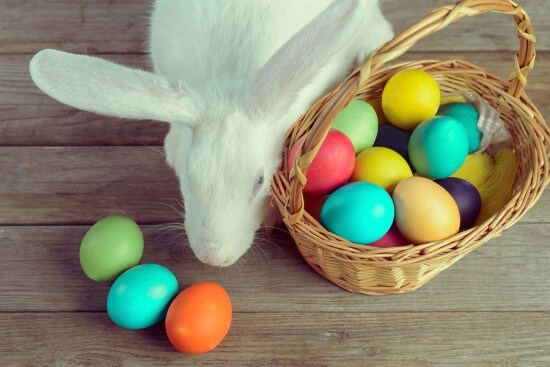 Although the exact origins of the Easter bunny are unclear, historical writings appear to indicate that the bunny, or hare, as an Easter symbol has its origins in Alsace, France and southwestern Germany. The Easter Bunny, and Easter celebrations as we now know them, have changed a great deal since their origination in the 1600s. Let’s explore the Easter Bunny and its integration into our modern day Easter celebrations.
Although the exact origins of the Easter bunny are unclear, historical writings appear to indicate that the bunny, or hare, as an Easter symbol has its origins in Alsace, France and southwestern Germany. The Easter Bunny, and Easter celebrations as we now know them, have changed a great deal since their origination in the 1600s. Let’s explore the Easter Bunny and its integration into our modern day Easter celebrations.
The rabbit was first celebrated as a symbol of Eostre, the German goddess of fertility. Hares were seen as a symbol of spring as well as fertility. Each year, Anglo-Saxons would hold a celebration to worship Eostre. The rabbit was a part of the celebration as it was symbolic of the goddess of fertility.
When Anglo-Saxons converted to Christianity, the celebration of Christ’s resurrection from the dead was combined with the celebration of Eostre because the dates were similar. At that point, the combined celebration became known as Easter. At its inception, although it did have religious elements and symbols as part of it, Easter had many pagan elements, too, including the bunny.
When the German settlers came to America, and settled in the Pennsylvania Dutch country, in the 1700s, they brought with them Easter with its celebrations and the Easter bunny, too. Back then, the Easter Bunny came the homes of good little girls and boys if they built a brightly colored nest and put it either on their front step or in a secluded spot within their home. If they had been good all year, the Easter bunny, known then as the O_ster Haws_e, would lay brightly colored eggs in the nest they made. For the children, it was similar to Christmas, because a creature would come and go during the night and whether or not a child got treats was dependant on their behavior.
The first edible Easter Bunnies, made in Germany during the early 1800s, were pastry confections. This is where the idea of making Easter Bunny shaped goodies is thought to have originated.
Since its humble beginnings as a celebration of Eostre, the German goddess of fertility, Easter has become very commercialized with homemade nests being replaced by mass produced, brightly colored baskets, designed just for the holiday. Today, instead of kids placing their baskets in secluded parts of their home, the Easter bunny hides the baskets after filling them so that the children have to search them out. While several aspects of the original Easter holiday have changed, children still look forward to laying out their baskets, and receiving their goodies from the Easter Bunny.
